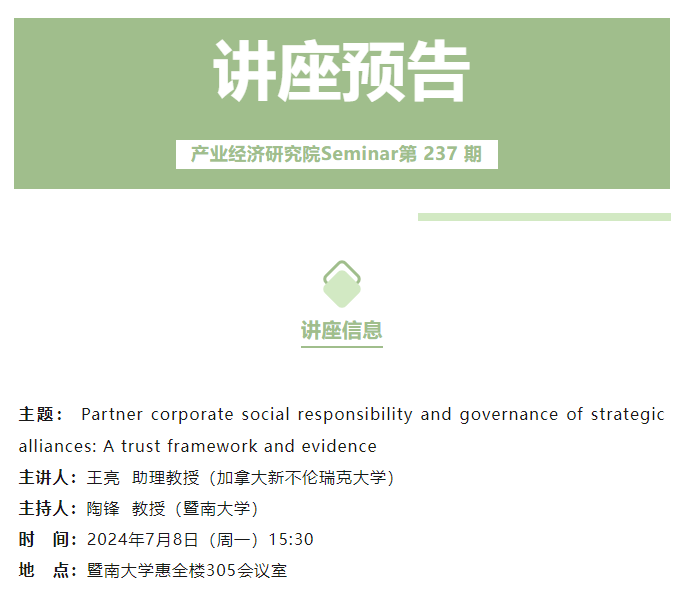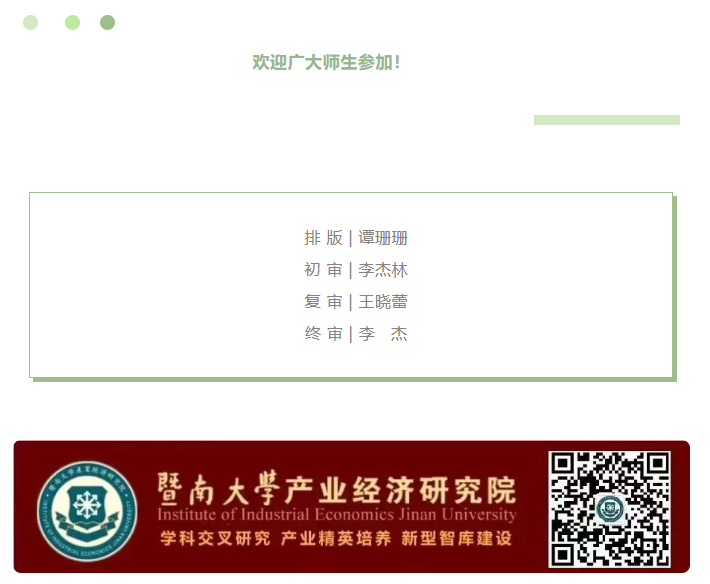作者:来源:产业经济研究院发布时间:2024-07-11 14:53:26


王亮,暨南大学产业经济学硕士,加拿大毅伟商学院(Ivey Business School)国际商务专业博士,现任加拿大新不伦瑞克大学助理教授,赫尔曼-西蒙商学院(Hermann Simon Business School)荣誉教授。研究方向集中于企业国际战略,跨国合作,和企业社会责任,相关文章发表于Journal of Business Research, Journal of Business Ethics, Long Range Planning, International Journal of Entrepreneurial Behavior and Research等主流期刊,并任多个期刊审稿人和Long Range Planning编委会成员。同时,王亮博士是案例教学和写作专家,其撰写的案例研究被Ivey Publishing,Harvard Business Education Publishing,和中欧商学院案例中心收录并全球发行,多次获得年度畅销案例和案例写作奖。

This study explores how corporate social responsibility (CSR) of a partner in alliances shapes the governance choice between an equity and non-equity structure. Conceptually, we propose that CSR of a partner, by serving as a proxy for trust, can trigger a trust building process wherein CSR helps the responsible partner earn trust from the other and the responsible partner then reciprocates with trust in the other. This process lifts mutual trust between partners and, in turn, reduces reliance on equity governance. Empirical evidence strongly supports that a partner’s CSR significantly lowers the likelihood of an equity structure for an alliance. This negative effect is augmented when the partners have richer past collaboration experience, is weakened but not reversed when they come from dissimilar industries, and remains stable whether they have different nationalities. This study extends the knowledge on the determinants of alliance governance, the strategic benefits of CSR, and the sources of interorganizational trust.
